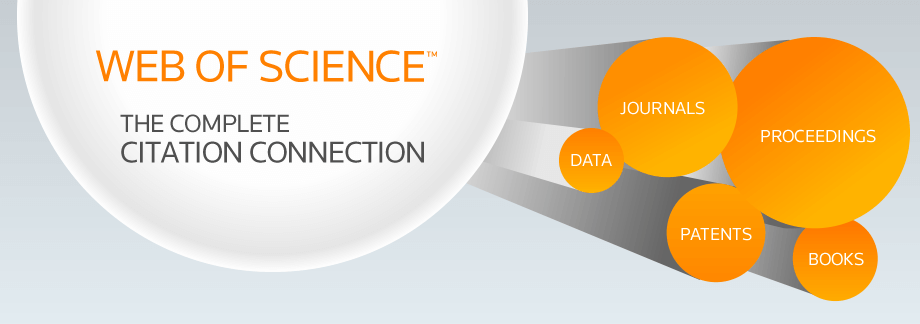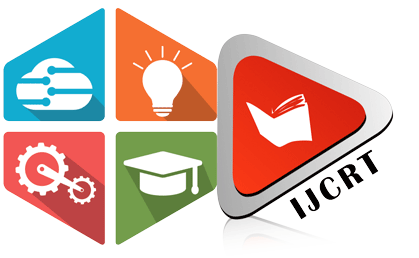INTERNATIONAL JOURNAL OF CREATIVE RESEARCH THOUGHTS - IJCRT (IJCRT.ORG)
International Peer Reviewed & Refereed Journals, Open Access Journal
IJCRT Peer-Reviewed (Refereed) Journal as Per New UGC Rules.
ISSN Approved Journal No: 2320-2882 | Impact factor: 7.97 | ESTD Year: 2013
Call For Paper - Volume 13 | Issue 11 | Month- November 2025
Scholarly open access journals, Peer-reviewed, and Refereed Journals, Impact factor 7.97 (Calculate by google scholar and Semantic Scholar | AI-Powered Research Tool) , Multidisciplinary, Monthly, Indexing in all major database & Metadata, Citation Generator, Digital Object Identifier(CrossRef DOI)
Contact Us Click Here
WhatsApp Contact Click Here
Volume 13 | Issue 7 |
| IJCRT Journal front page | IJCRT Journal Back Page |
Paper Title: Intelligent And Coordinated Traffic Signal Control Through AI And Networks Of Connected Cameras.
Author Name(s): AV Shreya, Umadevi Ramamoorthy
Published Paper ID: - IJCRT2507450
Register Paper ID - 291255
Publisher Journal Name: IJPUBLICATION, IJCRT
DOI Member ID: 10.6084/m9.doi.one.IJCRT2507450 and DOI :
Author Country : Indian Author, India, 560048 , Bengaluru, 560048 , | Research Area: Science and Technology Published Paper URL: http://ijcrt.org/viewfull.php?&p_id=IJCRT2507450 Published Paper PDF: download.php?file=IJCRT2507450 Published Paper PDF: http://www.ijcrt.org/papers/IJCRT2507450.pdf
Your Paper Publication Details:
Title: INTELLIGENT AND COORDINATED TRAFFIC SIGNAL CONTROL THROUGH AI AND NETWORKS OF CONNECTED CAMERAS.
DOI (Digital Object Identifier) :
Pubished in Volume: 13 | Issue: 7 | Year: July 2025
Publisher Name : IJCRT | www.ijcrt.org | ISSN : 2320-2882
Subject Area: Science and Technology
Author type: Indian Author
Pubished in Volume: 13
Issue: 7
Pages: d922-d929
Year: July 2025
Downloads: 113
E-ISSN Number: 2320-2882
Abstract
In big cities, traffic congestion is a major problem that is frequently brought on by static traffic light systems that don't take into account the flow of vehicles in real time. Due to their reliance on pre-programmed timings, traditional traffic signals cause needless delays, fuel waste, and ineffective traffic management. This study suggests an intelligent and well-coordinated traffic light control system that uses real-time video surveillance and artificial intelligence (AI). Using video feeds at crossings, the system analyses and detects vehicle density using computer vision algorithms. This analysis is used to dynamically modify signal timings in order to give priority to lanes with greater congestion. Additionally, by connecting several traffic lights via a communication protocol, the system allows neighbouring junctions to synchronize their signal phases. Green corridors are created, stop-and-go traffic is decreased, and general urban mobility is enhanced by this networked strategy. A centralized communication layer facilitates inter-signal data exchange, signal timing adjustment techniques, and real-time vehicle recognition utilizing YOLO models. To test the system, real-world circumstances are replicated through simulation using Python and OpenCV. According to preliminary findings, when compared to fixed-timer systems, the suggested approach greatly lowers vehicle waiting times and enhances traffic flow efficiency. This study advances the creation of intelligent transportation systems and offers smart cities dealing with escalating traffic problems a scalable answer.
Licence: creative commons attribution 4.0
License
Keywords
Artificial Intelligence, Traffic Signal Control, Smart Cities, Computer Vision, Real-Time Systems, Adaptive Traffic Management, Interconnected Networks.
License
Paper Title: Beyond Ideal Randomness: A Comprehensive Study on Practical Quantum Random Number Generators for Cryptographic Security
Author Name(s): Kantepalli Akhil, K. Kanagalakshmi
Published Paper ID: - IJCRT2507449
Register Paper ID - 291276
Publisher Journal Name: IJPUBLICATION, IJCRT
DOI Member ID: 10.6084/m9.doi.one.IJCRT2507449 and DOI :
Author Country : Indian Author, India, 560043 , Banglore, 560043 , | Research Area: Science and Technology Published Paper URL: http://ijcrt.org/viewfull.php?&p_id=IJCRT2507449 Published Paper PDF: download.php?file=IJCRT2507449 Published Paper PDF: http://www.ijcrt.org/papers/IJCRT2507449.pdf
Your Paper Publication Details:
Title: BEYOND IDEAL RANDOMNESS: A COMPREHENSIVE STUDY ON PRACTICAL QUANTUM RANDOM NUMBER GENERATORS FOR CRYPTOGRAPHIC SECURITY
DOI (Digital Object Identifier) :
Pubished in Volume: 13 | Issue: 7 | Year: July 2025
Publisher Name : IJCRT | www.ijcrt.org | ISSN : 2320-2882
Subject Area: Science and Technology
Author type: Indian Author
Pubished in Volume: 13
Issue: 7
Pages: d912-d921
Year: July 2025
Downloads: 97
E-ISSN Number: 2320-2882
Abstract
Quantum cryptography is a development that is crucial in improving cybersecurity, because it is based on quantum mechanics concepts and can be used to produce genuine random numbers, which are important in a strong cryptography. The abstract summarizes the findings of 30 major researches, which discuss different quantum random number generators (QRNGs) and their use in securing digital communications. The emergent distinction between QRNGs and classical pseudorandom number generators is noted in many studies pointing out the novel properties of quantum mechanics to generate indeed random numbers [1][2]. It is important to note that research highlights the need to have device-independent and semi-device-independent QRNG protocol that would offer security guarantees against adversarial tampering without requiring the security of the used devices [3][4]. Additionally, information that is known about entropy sources, approaches to extracting randomness, and the rigorous statistical justification [5][6] of high-quality RNG confirms that such RNG can be even more important in cryptography and information security. The enhanced method of public verification and combination of QRNGs and cloud services have bright prospects in a number of services in the finance and data privacy industry [7][8]. To sum up, quantum technologies will become even more diversified on an ongoing basis, and their implementation into cybersecurity systems can serve as an even stronger protection against new threats, which is why it is impossible to overestimate the role of quantum technologies in the security of the future of digital communications [9][10].
Licence: creative commons attribution 4.0
License
Keywords
Quantum Random Number Generator, Cryptographic Security, Quantum Key Distribution, Randomness Bias, QRNG Limitations
License
Paper Title: CLONING, EXPRESSION, AND PURIFICATION OF CAPSID PROTEIN 3 OF RICE TUNGRO SPHERICAL VIRUS AND ITS PRELIMINARY BIOPHYSICAL AND STRUCTURAL CHARACTERIZATION
Author Name(s): Sanjeev Kumar Kamepally, Srinivas Bandaru, Rakshita Singh, Someswar Rao Sagurthi, Sumanlatha Gaddam
Published Paper ID: - IJCRT2507448
Register Paper ID - 291260
Publisher Journal Name: IJPUBLICATION, IJCRT
DOI Member ID: 10.6084/m9.doi.one.IJCRT2507448 and DOI : https://doi.org/10.56975/ijcrt.v13i7.291260
Author Country : Indian Author, India, 500007 , Hyderabad, 500007 , | Research Area: Life Sciences All Published Paper URL: http://ijcrt.org/viewfull.php?&p_id=IJCRT2507448 Published Paper PDF: download.php?file=IJCRT2507448 Published Paper PDF: http://www.ijcrt.org/papers/IJCRT2507448.pdf
Your Paper Publication Details:
Title: CLONING, EXPRESSION, AND PURIFICATION OF CAPSID PROTEIN 3 OF RICE TUNGRO SPHERICAL VIRUS AND ITS PRELIMINARY BIOPHYSICAL AND STRUCTURAL CHARACTERIZATION
DOI (Digital Object Identifier) : https://doi.org/10.56975/ijcrt.v13i7.291260
Pubished in Volume: 13 | Issue: 7 | Year: July 2025
Publisher Name : IJCRT | www.ijcrt.org | ISSN : 2320-2882
Subject Area: Life Sciences All
Author type: Indian Author
Pubished in Volume: 13
Issue: 7
Pages: d903-d911
Year: July 2025
Downloads: 125
E-ISSN Number: 2320-2882
Abstract
Licence: creative commons attribution 4.0
License
Keywords
Rice Tungro Disease (RTD); RTSV; RTBV; CP3 Capsid Protein; Protein Purification; Fluorescence Spectroscopy; Virus-like Particles (VLPs); Transmission Electron Microscopy; Plant Virology
License
Paper Title: A BIOINFORMATICS APPROACH TO UNDERSTANDING RTSV CP3: STRUCTURAL INSIGHTS AND IMMUNE TARGET PREDICTION
Author Name(s): Sanjeev Kumar Kamepally, Srinivas Bandaru, Rakshita Singh, Someswar Rao Sagurthi, Sumanlatha Gaddam
Published Paper ID: - IJCRT2507447
Register Paper ID - 291263
Publisher Journal Name: IJPUBLICATION, IJCRT
DOI Member ID: 10.6084/m9.doi.one.IJCRT2507447 and DOI : https://doi.org/10.56975/ijcrt.v13i7.291263
Author Country : Indian Author, India, 500007 , Hyderabad, 500007 , | Research Area: Life Sciences All Published Paper URL: http://ijcrt.org/viewfull.php?&p_id=IJCRT2507447 Published Paper PDF: download.php?file=IJCRT2507447 Published Paper PDF: http://www.ijcrt.org/papers/IJCRT2507447.pdf
Your Paper Publication Details:
Title: A BIOINFORMATICS APPROACH TO UNDERSTANDING RTSV CP3: STRUCTURAL INSIGHTS AND IMMUNE TARGET PREDICTION
DOI (Digital Object Identifier) : https://doi.org/10.56975/ijcrt.v13i7.291263
Pubished in Volume: 13 | Issue: 7 | Year: July 2025
Publisher Name : IJCRT | www.ijcrt.org | ISSN : 2320-2882
Subject Area: Life Sciences All
Author type: Indian Author
Pubished in Volume: 13
Issue: 7
Pages: d893-d902
Year: July 2025
Downloads: 122
E-ISSN Number: 2320-2882
Abstract
Rice Tungro disease poses a significant challenge to rice cultivation throughout Southeast Asia and arises from coinfection by Rice Tungro Bacilliform Virus (RTBV) and Rice Tungro Spherical Virus (RTSV). RTSV plays a critical role in enabling the efficient transmission of RTBV through its insect vector, the green leafhopper (Nephotettix virescens). Among the viral components, the CP3 capsid protein of RTSV is essential for assembling virions and mediating interactions with both the host and the insect vector. In this investigation, we employed a range of bioinformatics tools to carry out an in silico characterization of the CP3 gene. The gene's nucleotide sequence was first translated into its amino acid counterpart, followed by an in-depth analysis of its physicochemical properties, secondary and tertiary structural features, and immunogenic potential. Using AlphaFold predictions and comparative homology modeling, high-confidence three-dimensional structural models were constructed and validated through tools such as Ramachandran plot evaluation, ProSA-web scoring, and Verify3D analysis. The core ?-barrel architecture, which is typical of viral capsid proteins, exposes potential surface epitopes, which may be involved in immune recognition or interactions with the insect vector [12]. Furthermore, docking simulations and electrostatic surface potential analysis were used to pinpoint likely binding interfaces for host or vector proteins. Strong sequence conservation among varied geographical RTSV isolates was discovered by evolutionary analysis, highlighting the possibility of broad-based diagnostic markers and resistance targets. Overall, this study provides detailed structural and functional insights into the RTSV CP3 protein and supports its relevance for applications in diagnostics, rice tungro infection management or pesticide development, and engineered resistance. It also shows how computer modeling can considerably progress plant virology, particularly in the lack of experimental structural evidence.
Licence: creative commons attribution 4.0
License
Keywords
RTBV, RTSV, CP3, capsid, TEM, VLP
License
Paper Title: AI-Based Workload Forecasting in E-Commerce Cloud Platforms
Author Name(s): Sudheer Singh, Shivaraj Yanamandram Kuppuraju, Nisha Gupta
Published Paper ID: - IJCRT2507446
Register Paper ID - 291256
Publisher Journal Name: IJPUBLICATION, IJCRT
DOI Member ID: 10.6084/m9.doi.one.IJCRT2507446 and DOI :
Author Country : Indian Author, India, Department of Computer Science, Guru Nanak Dev University, Amritsar , Department of Computer Science, Guru Nanak Dev University, Amritsar, Department of Computer Science, Guru Nanak Dev University, Amritsar , | Research Area: Science and Technology Published Paper URL: http://ijcrt.org/viewfull.php?&p_id=IJCRT2507446 Published Paper PDF: download.php?file=IJCRT2507446 Published Paper PDF: http://www.ijcrt.org/papers/IJCRT2507446.pdf
Your Paper Publication Details:
Title: AI-BASED WORKLOAD FORECASTING IN E-COMMERCE CLOUD PLATFORMS
DOI (Digital Object Identifier) :
Pubished in Volume: 13 | Issue: 7 | Year: July 2025
Publisher Name : IJCRT | www.ijcrt.org | ISSN : 2320-2882
Subject Area: Science and Technology
Author type: Indian Author
Pubished in Volume: 13
Issue: 7
Pages: d884-d892
Year: July 2025
Downloads: 100
E-ISSN Number: 2320-2882
Abstract
This paper explores the development and implementation of AI-based workload forecasting techniques to address the complex, dynamic demands faced by e-commerce cloud platforms. With the rapid growth of online retail and the accompanying fluctuations in user activity, traditional static and statistical forecasting methods often fail to provide the accuracy and responsiveness required for optimal cloud resource management. This research investigates advanced machine learning models, including LSTM, GRU, and Transformer architectures, and benchmarks their performance against conventional time series approaches like ARIMA and Prophet. Using real-world e-commerce workload data, the study demonstrates that deep learning models significantly enhance forecast precision, especially during peak demand periods driven by promotional events and shifting consumer behavior. A pilot deployment further validates the models' practical impact on dynamic resource scaling, cost efficiency, and service reliability. By integrating explainable AI techniques, the paper also addresses the need for interpretability and stakeholder trust in automated forecasting systems. The findings highlight both the transformative potential and the operational challenges of adopting AI for workload prediction, offering actionable insights for e-commerce businesses and cloud providers aiming to build more intelligent, resilient, and sustainable digital infrastructures.
Licence: creative commons attribution 4.0
License
Keywords
AI-based workload forecasting, e-commerce cloud platforms
License
Paper Title: Evaluating Lumosity's Role in Neurorehabilitation
Author Name(s): Sonia Saini, Dr. Meetu
Published Paper ID: - IJCRT2507445
Register Paper ID - 291180
Publisher Journal Name: IJPUBLICATION, IJCRT
DOI Member ID: 10.6084/m9.doi.one.IJCRT2507445 and DOI :
Author Country : Indian Author, India, 124001 , Rohtak, 124001 , | Research Area: Humanities All Published Paper URL: http://ijcrt.org/viewfull.php?&p_id=IJCRT2507445 Published Paper PDF: download.php?file=IJCRT2507445 Published Paper PDF: http://www.ijcrt.org/papers/IJCRT2507445.pdf
Your Paper Publication Details:
Title: EVALUATING LUMOSITY'S ROLE IN NEUROREHABILITATION
DOI (Digital Object Identifier) :
Pubished in Volume: 13 | Issue: 7 | Year: July 2025
Publisher Name : IJCRT | www.ijcrt.org | ISSN : 2320-2882
Subject Area: Humanities All
Author type: Indian Author
Pubished in Volume: 13
Issue: 7
Pages: d876-d883
Year: July 2025
Downloads: 126
E-ISSN Number: 2320-2882
Abstract
Background: Neurological rehabilitation aims to enhance functional abilities and well-being in individuals with nervous system disorders.The Lumosity brain training program is one example of Computerized Cognitive Training (CCT), which has become a potential technique for improving cognitive function in a variety of neurological diseases. Objective: This review evaluates the efficacy of Lumosity-based CCT in improving cognitive function in patients with neurological disorders by analyzing recent randomized controlled trials (RCTs). Methods: A comprehensive literature search was conducted using databases including PubMed, Google Scholar, ResearchGate, ScienceDirect, and Cochrane Library. Inclusion criteria were randomized controlled trials (RCTs) that are written in english, published within the last five years, and involve game-based interventions. Exclusion criteria were if they are abstract-only, have been published less than five years ago, lack complete text availability, or are not written in english. sResults: Ten RCTs were reviewed involving diverse populations including stroke survivors,multiple sclerosis, brain injury, and patients with Alzheimer's disease. Most studies demonstrated improvements in cognitive domains such as memory, attention, processing speed, and executive functions. Enhanced outcomes were noted when CCT was combined with physical therapies (e.g., aerobic or vestibular training). However, several studies reported no significant differences between experimental and control groups, suggesting context-dependent efficacy. Limitations included small sample sizes, lack of long-term follow-up, limited generalizability, and concerns about real-world applicability. Conclusion: Lumosity brain training shows potential in cognitive rehabilitation, with positive effects on specific cognitive functions. The integration of CCT with physical interventions yield enhanced outcomes. Despite encouraging findings, further large-scale, long-term RCTs are needed to validate its efficacy and determine its advantages over traditional cognitive therapies.
Licence: creative commons attribution 4.0
License
Keywords
Neurorehabilitation, Lumosity Brain Training
License
Paper Title: Nobody Can Control Money: A Blockchain Perspective on Financial Freedom
Author Name(s): Hemil Virani, Manju Sadasivan
Published Paper ID: - IJCRT2507444
Register Paper ID - 290973
Publisher Journal Name: IJPUBLICATION, IJCRT
DOI Member ID: 10.6084/m9.doi.one.IJCRT2507444 and DOI :
Author Country : Indian Author, India, 560033 , Bengaluru, 560033 , | Research Area: Science and Technology Published Paper URL: http://ijcrt.org/viewfull.php?&p_id=IJCRT2507444 Published Paper PDF: download.php?file=IJCRT2507444 Published Paper PDF: http://www.ijcrt.org/papers/IJCRT2507444.pdf
Your Paper Publication Details:
Title: NOBODY CAN CONTROL MONEY: A BLOCKCHAIN PERSPECTIVE ON FINANCIAL FREEDOM
DOI (Digital Object Identifier) :
Pubished in Volume: 13 | Issue: 7 | Year: July 2025
Publisher Name : IJCRT | www.ijcrt.org | ISSN : 2320-2882
Subject Area: Science and Technology
Author type: Indian Author
Pubished in Volume: 13
Issue: 7
Pages: d864-d875
Year: July 2025
Downloads: 141
E-ISSN Number: 2320-2882
Abstract
Blockchain technology has revolutionised the financial sector by allowing transactions to occur without governmental intervention. While traditional systems have governments controlling the flow of money through banks and financial institutions, blockchain uses a distributed ledger system that offers people additional security and anonymity. This essay looks at how governments control the financial sector and how blockchain threatens that authority. Blockchain reinforces financial sovereignty in two ways: on the one hand, control; and on the other, concerns about security, regulation, and misuse. Last but not least, this study investigates whether governments can control currency in a blockchain economy.
Licence: creative commons attribution 4.0
License
Keywords
Blockchain, Financial Autonomy, Decentralized Finance (DeFi), Government Regulation, Digital Currency Control, Privacy, and Security
License
Paper Title: Study of Paintings of a Particular Region or Period (e.g., Mughal Paintings, Rajasthani Paintings, etc.)
Author Name(s): Narendra Sahu
Published Paper ID: - IJCRT2507443
Register Paper ID - 291301
Publisher Journal Name: IJPUBLICATION, IJCRT
DOI Member ID: 10.6084/m9.doi.one.IJCRT2507443 and DOI :
Author Country : Indian Author, India, - , -, - , | Research Area: Science and Technology Published Paper URL: http://ijcrt.org/viewfull.php?&p_id=IJCRT2507443 Published Paper PDF: download.php?file=IJCRT2507443 Published Paper PDF: http://www.ijcrt.org/papers/IJCRT2507443.pdf
Your Paper Publication Details:
Title: STUDY OF PAINTINGS OF A PARTICULAR REGION OR PERIOD (E.G., MUGHAL PAINTINGS, RAJASTHANI PAINTINGS, ETC.)
DOI (Digital Object Identifier) :
Pubished in Volume: 13 | Issue: 7 | Year: July 2025
Publisher Name : IJCRT | www.ijcrt.org | ISSN : 2320-2882
Subject Area: Science and Technology
Author type: Indian Author
Pubished in Volume: 13
Issue: 7
Pages: d859-d863
Year: July 2025
Downloads: 126
E-ISSN Number: 2320-2882
Abstract
Study of Paintings of a Particular Region or Period (e.g., Mughal Paintings, Rajasthani Paintings, etc.)
Licence: creative commons attribution 4.0
License
Keywords
Study of Paintings of a Particular Region or Period (e.g., Mughal Paintings, Rajasthani Paintings, etc.)
License
Paper Title: Sikh Dharam Ka Etihashik Adhayan (1469-1730)
Author Name(s): Gurpreet Kaur, Dr . Mahesh Chadra
Published Paper ID: - IJCRT2507442
Register Paper ID - 291261
Publisher Journal Name: IJPUBLICATION, IJCRT
DOI Member ID: 10.6084/m9.doi.one.IJCRT2507442 and DOI :
Author Country : Indian Author, India, 202001 , Aligarh, 202001 , | Research Area: Arts All Published Paper URL: http://ijcrt.org/viewfull.php?&p_id=IJCRT2507442 Published Paper PDF: download.php?file=IJCRT2507442 Published Paper PDF: http://www.ijcrt.org/papers/IJCRT2507442.pdf
Your Paper Publication Details:
Title: SIKH DHARAM KA ETIHASHIK ADHAYAN (1469-1730)
DOI (Digital Object Identifier) :
Pubished in Volume: 13 | Issue: 7 | Year: July 2025
Publisher Name : IJCRT | www.ijcrt.org | ISSN : 2320-2882
Subject Area: Arts All
Author type: Indian Author
Pubished in Volume: 13
Issue: 7
Pages: d854-d858
Year: July 2025
Downloads: 112
E-ISSN Number: 2320-2882
Abstract
Sikh Dharam Ka Etihashik Adhayan (1469-1730)
Licence: creative commons attribution 4.0
License
Keywords
Sikh Dharam Ka Etihashik Adhayan (1469-1730)
License
Paper Title: Consequence of Academic Audit In Improving Quality Education In Pupil Processing Organization
Author Name(s): Dr.P.Muthusamy, Dr. G.E.SUKUMAR
Published Paper ID: - IJCRT2507441
Register Paper ID - 290421
Publisher Journal Name: IJPUBLICATION, IJCRT
DOI Member ID: 10.6084/m9.doi.one.IJCRT2507441 and DOI :
Author Country : Indian Author, India, 462036 , BHOPAL, 462036 , | Research Area: Other area not in list Published Paper URL: http://ijcrt.org/viewfull.php?&p_id=IJCRT2507441 Published Paper PDF: download.php?file=IJCRT2507441 Published Paper PDF: http://www.ijcrt.org/papers/IJCRT2507441.pdf
Your Paper Publication Details:
Title: CONSEQUENCE OF ACADEMIC AUDIT IN IMPROVING QUALITY EDUCATION IN PUPIL PROCESSING ORGANIZATION
DOI (Digital Object Identifier) :
Pubished in Volume: 13 | Issue: 7 | Year: July 2025
Publisher Name : IJCRT | www.ijcrt.org | ISSN : 2320-2882
Subject Area: Other area not in list
Author type: Indian Author
Pubished in Volume: 13
Issue: 7
Pages: d850-d853
Year: July 2025
Downloads: 133
E-ISSN Number: 2320-2882
Abstract
Abstract - In the present context, the academic audit is an important element in the Pupil Processing organization for assuring the quality of learning, research, Knowledge transfer and Identify, Whether they maintaining standard or not in the aspects of programmes offer and provide awards. It is an explicit provision of the institution to take responsibility for assuring quality of Teaching, Research and service. In any pupil processing organization, the Evaluation done continuously by having involvement in order to know the present position of academic activities and get remedy for that. The quality of education can be measured through academic audit by measuring the adequacy of academic input. It actually provides opportunity to implement the logical and meaningful steps to precede the academic activity in an effective manner.
Licence: creative commons attribution 4.0
License
Keywords
academic, audit, pupil, organization, learning, research, knowledge and quality.
License
November 2025
Volume 13 | Issue 11
Last Date :
30-Nov-2025
Submit Manuscript Online Impact Factor: 7.97 Review Results : Within 02-03 Days Paper Publication : Within 02-03 Days

ISSN: 2320-2882 Impact Factor: 7.97 and ISSN APPROVED Journal Starting Year (ESTD) : 2013

ISSN: 2320-2882 Impact Factor: 7.97 and ISSN APPROVED Journal Starting Year (ESTD) : 2013

CONFERENCE PROPOSAL CONFERENCE PROCEEDINGS







































































